Warren Buffett: The Greatest Factor Investor of All Time?
How Much Alpha Did Warren Buffett Generate?
April 2019. Reading Time: 10 Minutes. Author: Nicolas Rabener.
SUMMARY
- A factor exposure of Berkshire Hathaway reveals structural factor tilts
- Long Value, Size, Quality, and Low Volatility factors and short Growth and Dividend Yield
- Warren Buffet generated little alpha, but is highly skilled at harvesting factor returns
SAINTS AND STAR INVESTORS
The Vatican waits at least five years after a person died before it begins considering whether they are worthy of sainthood. The canonization process can take decades, even centuries, to complete as the church meticulously investigates the lives of candidates for saintly virtues, associated miracles, and other indicators of divine influence.
The investment industry would be well advised to follow a similarly rigorous process before elevating particular investors to superstar status. Many investors, Bill Ackman, David Einhorn, Bill Miller, and Neil Woodford, among them, have prematurely become icons before tumbling from the heights. Many more have risen, fallen, and already been forgotten.
Analyses of these star investors’ track records often reveal exposure to certain styles like Value or Growth. Since factors are just as cyclical as equity markets, track records tend to rise and fall with factor performance (read Smart Beta & Factor Correlations to the S&P 500).
Warren Buffett is among those few investors who has achieved iconic status and never relinquished it. The pedestal to which he has ascended has barely budged over the last several decades. Although investors have experienced perfectly normal periods of underperformance when investing in Berkshire Hathaway, Buffett has avoided the major pitfalls. His stellar track record is assured.
So from a factor perspective, what has driven Berkshire Hathaway’s outperformance?
BERKSHIRE HATHAWAY VERSUS THE S&P 500
While Buffett has controlled Berkshire Hathaway (BRK.A) since 1964, his track record over roughly the last three decades offers a robust enough sample size to draw some conclusions about what has contributed to his success. His outperformance relative to the S&P 500 has been especially significant since 1991 and created immense value for BRK.A shareholders, albeit with higher volatility due to implied leverage.
Though there were some periods of underperformance, during the Tech Bubble in 2000, for example, these often turned out to be based on wise investment decisions that translated into superior returns later on (read Black Swans, Major Events & Factor Returns).
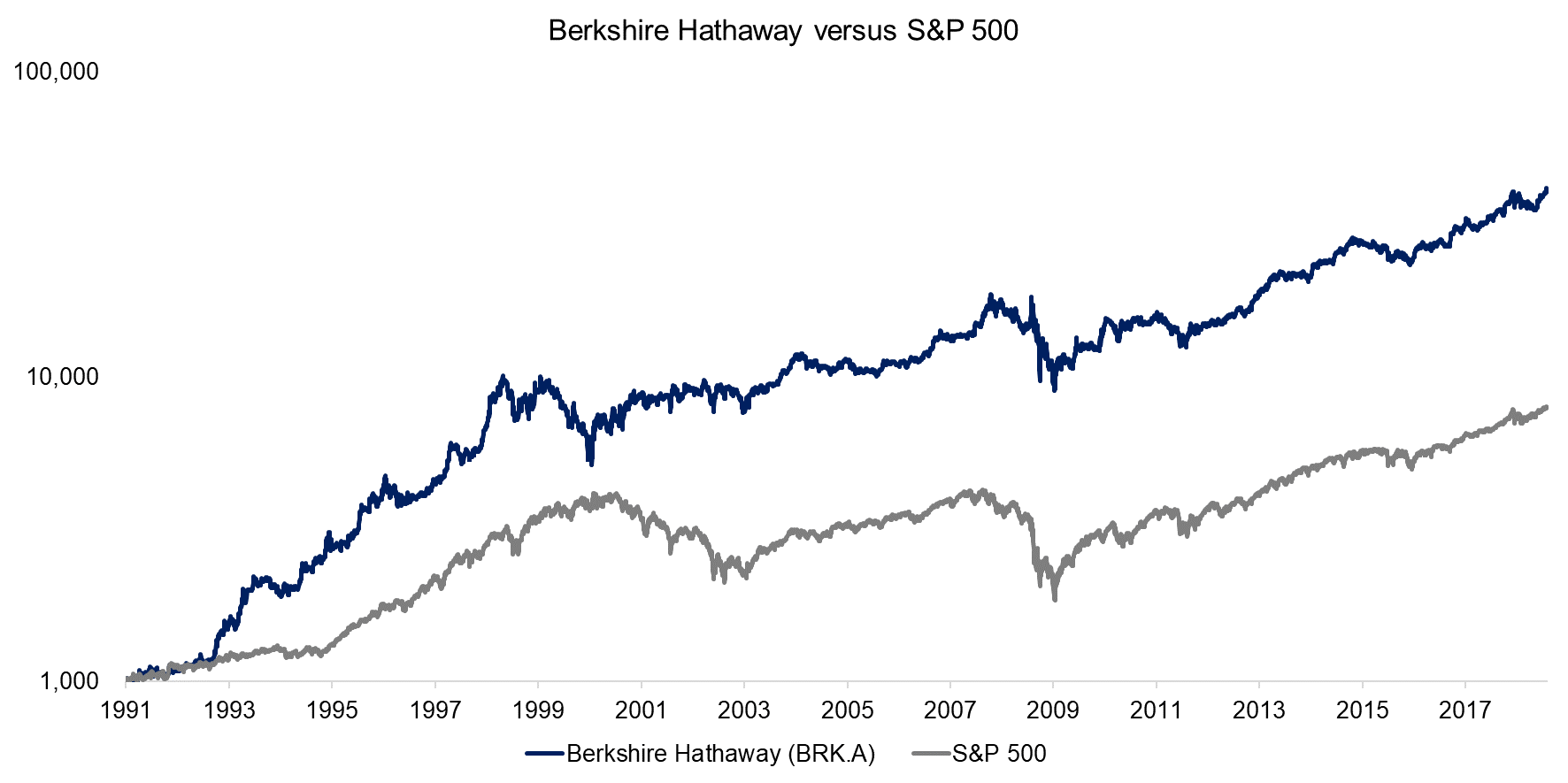
Source: FactorResearch
FACTOR EXPOSURE ANALYSIS OF BERKSHIRE HATHAWAY
We next conduct a factor exposure analysis of Berkshire Hathaway by measuring the betas to common equity factors through a regression analysis. The factor betas are time-varying and the analysis is reminiscent a modern art piece. It does little to answer the question of whether Buffett’s success is the result of factor bets.
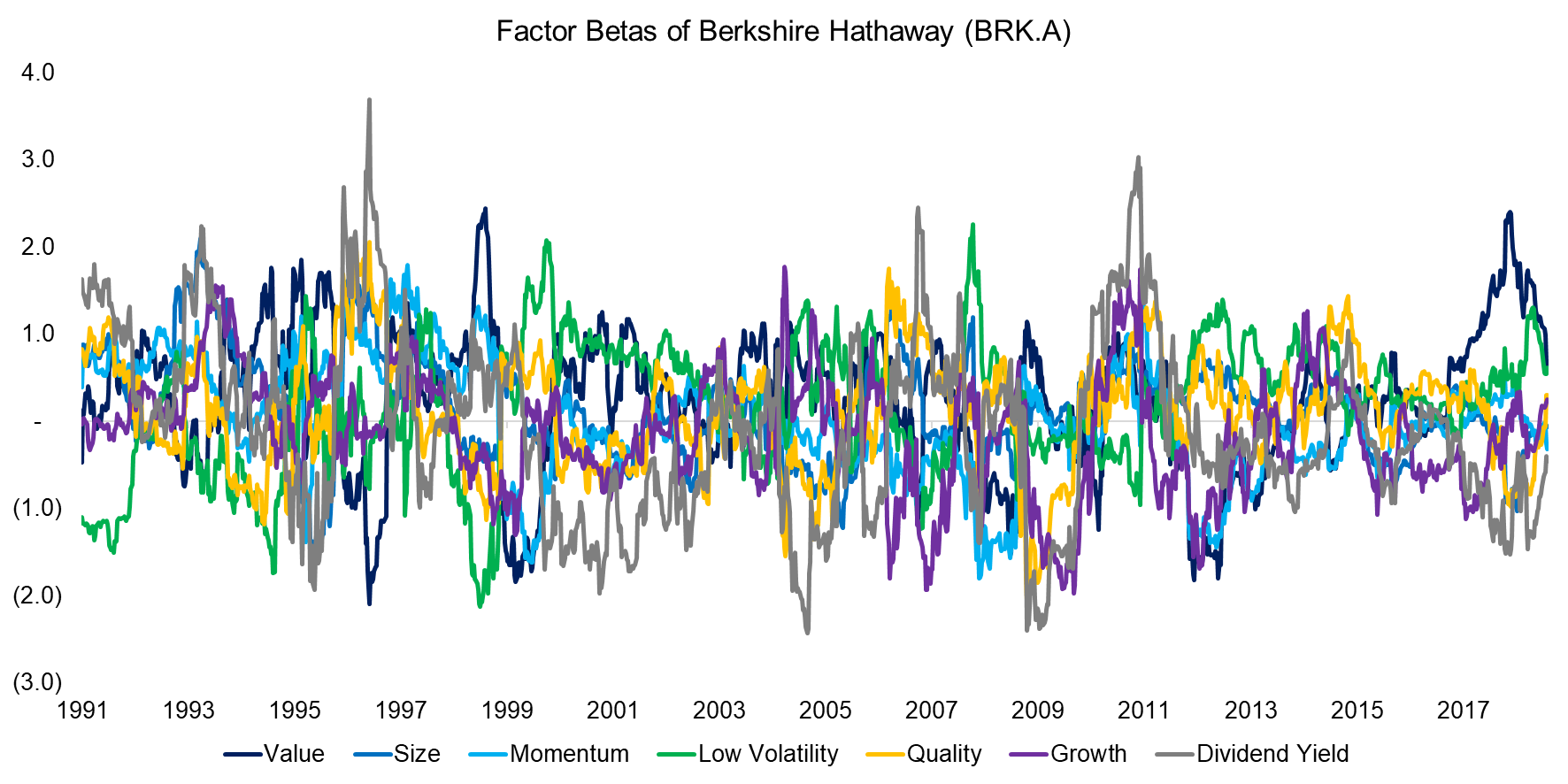
Source: FactorResearch
However, by averaging the factor betas over the last three decades, a clear picture emerges: BRK.A had positive exposure to the Value, Size, Low Volatility, and Quality factors as well as negative exposure to Growth and Dividend Yield.
Naturally, this reflects Buffett’s well-known preference for cheap and high-quality firms over high-growth technology companies. Despite recent investments in Apple and other tech stocks, such additions are more akin to existing blue-chip holdings as Coca-Cola rather than pure growth companies like Netflix.
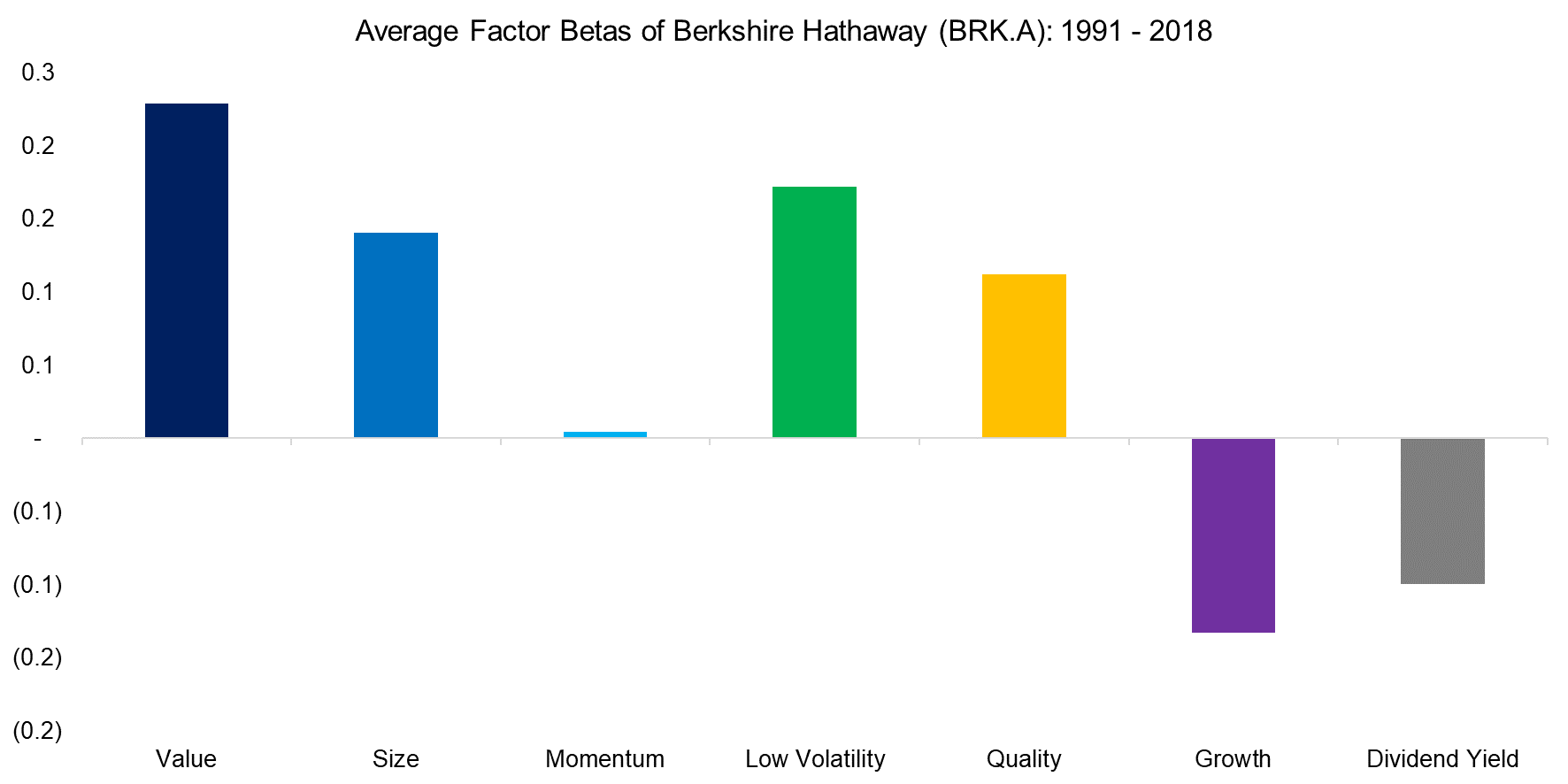
Source: FactorResearch
REPLICATING BERKSHIRE HATHAWAY
Because of this better understanding of Berkshire Hathaway’s factor exposure, we can apply these data points to replicate BRK.A with a factor-mimicking portfolio. We measure the factor exposure on a monthly basis and then allocate to long-short factor portfolios based on BRK.A’s exposure for the next month.
The factor-mimicking portfolio follows the trend of Berkshire Hathaway relatively closely and therefore achieves a similar outperformance relative to the S&P 500. Naturally this portfolio is based on historical data that is reflected in BRK.A’s stock price and is lagging in nature, but Berkshire Hathaway’s portfolio of investments does not change too frequently.
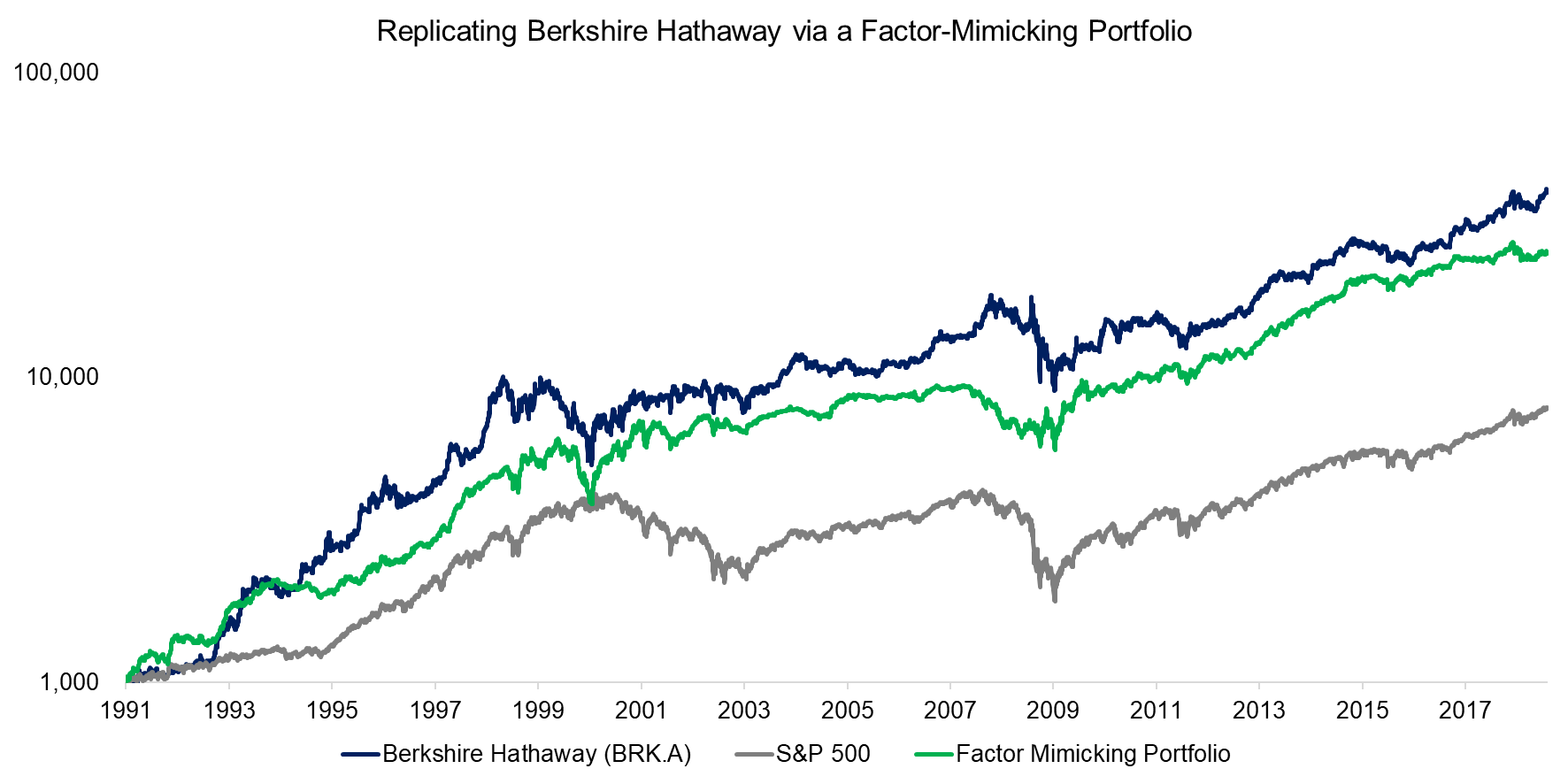
Source: FactorResearch
BERKSHIRE HATHAWAY’S OUTPERFORMANCE: ALPHA VERSUS FACTOR RETURNS
Why replicate Berkshire Hathaway performance through factors rather than gaining exposure to Buffett’s expertise by simply buying the stock? Factor-mimicking portfolios are typically used to access to something inaccessible. Before 1996, most retail investors could not afford Berkshire Hathaway stock, which was selling at more than $30,000 a share. Buffett solved that problem by issuing B-class shares with a lower nominal value.
The factor-mimicking portfolio helps investors distinguish between alpha and factor returns given Berkshire Hathaway’s significant exposure to common equity factors. The analysis demonstrates that most of the outperformance relative to the S&P 500 is explained by factor exposure, with little alpha generated over time.
Berkshire Hathaway fans might be surprised, even offended, by our suggestion of a lack of alpha. But we could also contend that Buffett may be the best factor investor ever based on the wealth he created. While Buffett is unlikely to characterize his investment style in these terms, he has demonstrated unprecedented skill in selecting factors, constructing a multi-factor portfolio, and adapting the factor mix over time.
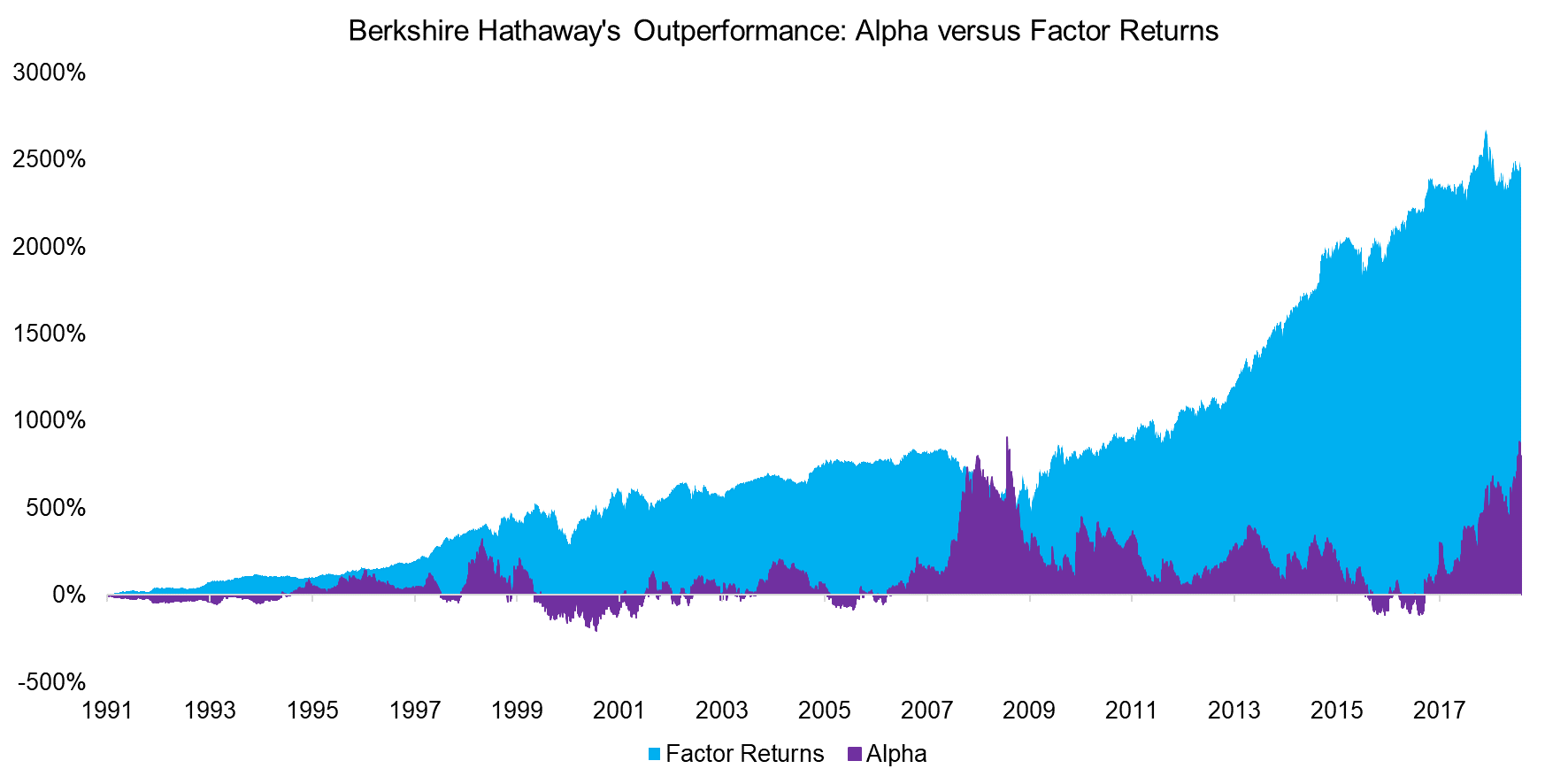
Source: FactorResearch
FURTHER THOUGHTS
More than $100 billion annually has been invested in factor-focused products in recent years. But selecting factors and combining them into multi-factor portfolios is a challenging endeavor.
So Berkshire Hathaway might be an alternative to multi-factor products. After all, the company is supported by a fund manager with a decades-long track record of skillfully managing factor exposure. The management fee is competitive compared to smart beta exchange-traded funds (ETFs) and Buffett’s stake in the company ensures that his interests are aligned with those of his investors.
Investors just have to hope that the contrarian diet of Cherry Coke and burgers will sustain the fund manager for a few more years. Whatever happens, that diet has already secured Buffett’s place in the canon of great investors.
RELATED RESEARCH
ABOUT THE AUTHOR
Nicolas Rabener is the CEO & Founder of Finominal, which empowers professional investors with data, technology, and research insights to improve their investment outcomes. Previously he created Jackdaw Capital, an award-winning quantitative hedge fund. Before that Nicolas worked at GIC and Citigroup in London and New York. Nicolas holds a Master of Finance from HHL Leipzig Graduate School of Management, is a CAIA charter holder, and enjoys endurance sports (Ironman & 100km Ultramarathon).
Connect with me on LinkedIn or X.

